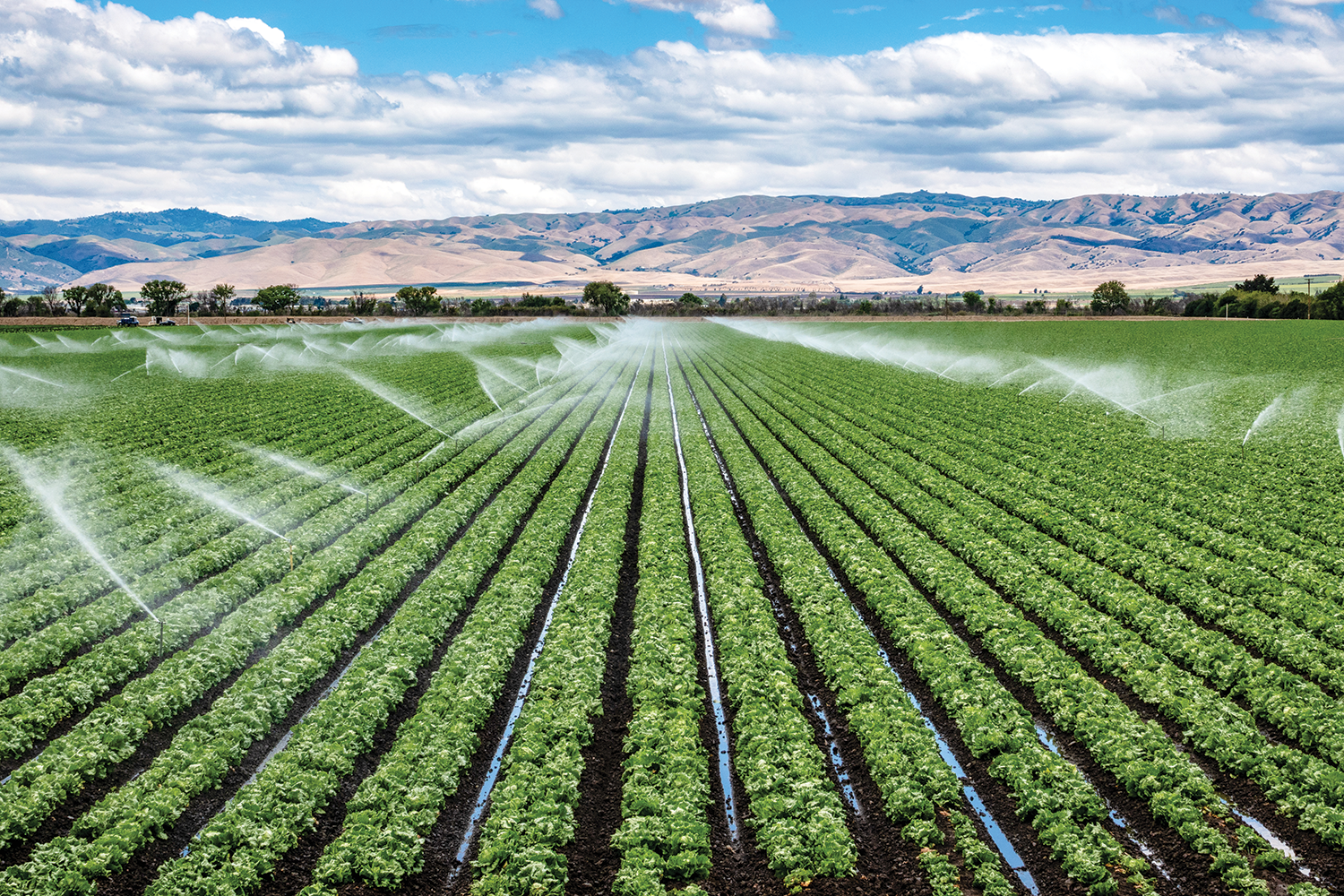New fertilizer management rules begin in Central Coast

By Bob Johnson
A moment of truth has arrived for Central Coast vegetable growers, who face the challenge of meeting fertilizer water quality regulations that will steadily grow stricter between now and 2051.
March 1 marked the beginning of the first year that growers in impacted areas will have to record and report fertilizer applications under rules approved in 2021 by the Central Coast Regional Water Quality Control Board.
The first year, the regulations will allow 500 pounds of nitrogen per acre to be applied over and above what is removed with the crop. Under the water board’s Ag Order 4.0, the rules will grow steadily stricter until 2051, when the standard tightens to a maximum of 50 pounds of nitrogen per acre after crop removal.
“We have sampled 4,000 ranch wells and a third of them came back above 10 parts per million nitrate-nitrogen, which is the safe drinking water standard,” said Sarah Lopez, executive director of Central Coast Water Quality Preservation Inc. The group is an intermediary between area growers and the water board.
Lopez joined researchers, growers and regulators in discussing the new rules—and how to meet them—during a meeting in Salinas last month on irrigation and nutrient management. The event was sponsored by the University of California Cooperative Extension.
Regulations are particularly strict on the Central Coast, where regional water officials set discharge requirements for irrigated lands to protect water quality in underground aquifers that people rely on for drinking water.
“Our region is unique in that we get about 90% of our drinking water from groundwater,” said Jillian Flavin, environmental scientist at the regional board.
Many regional vegetable growers already meet the standard allowing application of 500 more pounds of nitrogen than is removed at harvest. But the increasing standards over the next three decades could be challenging.
When Central Coast water officials approved the rules for reporting fertilizer applications, they noted that the region produces multiple crops per acre per year, with high-value commodities such as lettuce, spinach, broccoli and strawberries requiring significant nitrogen.
“If you apply 2 inches of well water that is 30 parts per million nitrate-nitrogen, that is almost 14 pounds of nitrogen per acre,” said Michael Cahn, UCCE irrigation farm advisor.
The nitrogen in the irrigation water can climb to 100 pounds an acre or more—and growers will have to include that information in their fertilizer budgets to meet the regulations. Fertilizer budgets will also have to account for nitrogen already in the root zone and available to the crop.
Cahn advised growers to “estimate the crop uptake over the next 10 days, subtract what will be in the water and what is already in the root zone” to get their fertilizer need.
Nitrogen in the water and topsoil can be calculated using test strips. But efficient irrigation management is needed to keep these nutrients in the root zone and available to the crop, while keeping them from leaching deeper.
More precise fertilizer and water applications will be enough to meet the regulations in the early years, but additional steps will be needed as the rules grow more strict, some regional producers say.
“Cole crops in your rotation are a big resource because they have the ability to scavenge excess nitrogen from pretty deep in the soil,” said Eric Morgan, vice president at Braga Fresh, which already has some fields that meet the standards that will go into effect in 2030.
Another practice that may become necessary is planting cover crops to pull nitrogen back up to the root zone.
“We cover crop about a third of our ground every year,” Morgan said.
“If you look at the credits you can get for cover crops and include water and soil nitrogen in your calculations, some of these lower limits look more doable,” Lopez said.
The new regulations will encourage more growers to use practices such as cover crops, which can absorb nitrates to protect groundwater. Ag Order 4.0 provides incentives for using cover crops, as well as compost and organic fertilizers.
“The Ag order is essentially a speed limit,” said Eric Brennan, U.S. Department of Agriculture research horticulturist who has studied cover crops extensively. “It helps us slow down and change our behavior. It slows down the loss of nitrogen and increases the efficiency. The cover crops will improve the efficiency of your system.”
Under Ag Order 4.0, growers can get credits for employing cover crops that have a minimum biomass of 4,500 pounds per acre and a carbon-to-nitrogen ratio equal to or greater than 20 to 1.
Brennan suggested planting as early in the fall as possible to get strong cover crop growth during the warmer weather.
“Calibrate your grain drill to save seeds and suppress weeds,” he advised. “You want to see the canopy close within 30 days.”
While operations such as Braga Fresh that took on the nitrogen challenge years ago will be able to meet the water quality regulations for years, other growers will face challenges in the near future.
“Taking new information and implementing new practices is a long-term process,” said Sergio Casillas, safety supervisor at D’Ariggo California, a Salinas Valley vegetable producer. “It’s a pretty complicated process. You have to change everything you do and ask for help. There’s a lot of knowledge out there—don’t take this on your own.”
(Bob Johnson is a reporter in Monterey County. He may be contacted at bjohn11135@gmail.com.)




